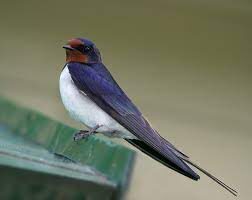What species are being researched and why? A bibliometric analysis of breeding birds in Italy
Maurizio Sarà
Abstract:
The publication of updated works on the distribution, breeding and conservation status of Italian birds has stimulated an analysis of the factors that have so far guided the research. This was done through a bibliometric analysis of one of the largest scientific databases on the web. Two publication metrics were used, the total number of papers and the h-index. They express the quantity and the quality of research efforts
through their impact on the scientific community. 791 articles concerning the 270 species reported in the Italian Atlas of Breeding Birds were selected and analysed by univariate statistics and negative binomial GLMs. Eight multilevel factors (origin of species, breeding phenology, main occupied habitat, population trends, degree of threat, national interest relative to population management, functional grouping and geographic range size) were used as potential predictors of species publication metrics. These 791 papers attracted 20,982 citations and had an overall h-index of 48. The publication years ranged from 1975 to 2023 with a significant increase in slope through time. The Barn Swallow leads the top ten of both publication metrics followed by the Lesser Kestrel and the Golden Eagle in the case of number of papers, while the Red-backed Shrike, and again the Lesser Kestrel follow the Barn Swallow in the first places of the h-index top ten. Main habitat, functional grouping and geographic range size are modelled as significant factors predicting a change in publication metrics, instead, the other five factors do not predict a significant change in both response variables. The lack of focus on research on species in numerical decline, threatened, or of national interest for population management reveals a main gap in Italian ornithological research. Another one is the skewed distribution of studies, with a not negligible 17% of breeding species that have never been the subject of a paper. These weaknesses are likely due to the low presence of ornithologists in local/national environmental and wildlife management bodies and to the uneven distribution of research groups among the Italian regions. Increasing the number of professional ornithologists and including them in local authorities and regional administrations is the best strategy to grow the levels of research and protection of Italian birds.

